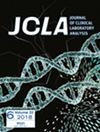In this study, we attempted to select the optimum cases for a prostate biopsy based on routine laboratory test results in addition to prostate-specific antigen (PSA) blood test using H2O automated machine learning (AutoML) software, which includes many common machine learning algorithms.
The study included 737 patients (46–88 years old). Routine laboratory measurements were used to train machine learning models using H2O AutoML. We created a model that classifies prostate biopsy results as malignant or benign. The performance of the best model was evaluated using the area under the receiver operating characteristic curve (AUC), log-loss metric, F1 score, positive predictive value (PPV), negative predictive value (NPV), sensitivity, and specificity. The model's performance was evaluated through the SHapley Additive exPlanations (SHAP) analysis feature-based interpretation method applied to comprehend the machine learning model.
The gradient boosting machine model was the most successful. The best result was obtained in the model with 11 parameters, including PSA, free PSA, free PSA to PSA, hemoglobin, neutrophils, platelets, neutrophil-to-lymphocyte ratio (NLR), glucose, platelet-to-lymphocyte ratio (PLR), lymphocytes, and age. The AUC of this model was 0.72, the specificity was 0.84, the PPV was 0.65, the NPV was 0.69, and the accuracy was 0.68.
Our results suggest that adding only routine laboratory parameters to the PSA test and developing machine learning algorithms can help reduce the number of unnecessary prostate biopsies without overlooking the diagnosis of PCa.



